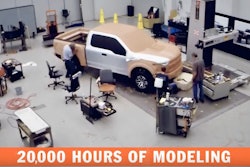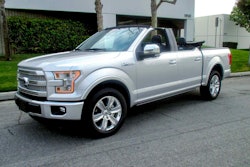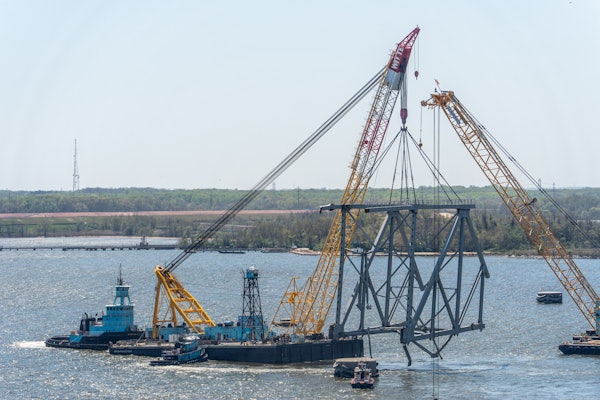
UPS has successfully tested a drone designed to launch from the top of one of its delivery trucks.
The test, performed Feb. 20 in Lithia, Florida, with Workhorse Group, an Ohio-based electric truck and drone developer, successfully sent the drone first on an autonomous package delivery and then back to the truck while it was out making a separate delivery.
“This test is different than anything we’ve done with drones so far. It has implications for future deliveries, especially in rural locations where our package cars often have to travel miles to make a single delivery,” says Mark Wallace, UPS senior vice president of global engineering and sustainability. “Imagine a triangular delivery route where the stops are miles apart by road. Sending a drone from a package car to make just one of those deliveries can reduce costly miles driven. This is a big step toward bolstering efficiency in our network and reducing our emissions at the same time.”
However, as TechCrunch reports, it wasn’t all smooth flying. During a second test, some type of interference caused the drone to abort its launch the aircraft “tried to land on top of the UPS truck, fell to the side and was nearly crushed by the still-closing lid of the vehicle.”
Kinks aside, the endeavor has the potential to save the company quite a bit of money.
With ORION, UPS’s On-Road Integrated Optimization Navigation routing software, a reduction of just one mile per driver per day over one year can save the company up to $50 million. UPS has about 66,000 delivery drivers on the road each day. Rural delivery routes are the most expensive to serve due to the time and vehicle expenses required to complete each delivery. In this test, the drone made one delivery while the driver continued down the road to make another. This is a possible role UPS envisions for drones in the future.
“Drivers are the face of our company, and that won’t change,” Wallace said. “What’s exciting is the potential for drones to aid drivers at various points along their routes, helping them save time and deliver on increasing customer service needs that stem from the growth of e-commerce.”
The drone used in Monday’s test was the Workhorse HorseFly UAV Delivery system. It is a high-efficiency, octocopter delivery drone that is fully integrated with Workhorse’s line of electric/hybrid delivery trucks. The drone docks on the roof of the delivery truck. A cage suspended beneath the drone, extends through a hatch into the truck. A UPS driver inside loads a package into the cage and presses a button on a touch screen, sending the drone on a preset autonomous route to an address. The battery-powered HorseFly drone recharges while it’s docked. It has a 30-minute flight time and can carry a package weighing up to 10 pounds.
For this test, Workhorse preset the route for the drone. But in the future, routes could be determined by UPS’s ORION system, the company’s proprietary routing software.
“It’s wonderful to see this technology applied in such a practical way,” said Stephen Burns, Workhorse founder and CEO. “The drone is fully autonomous. It doesn’t require a pilot. So the delivery driver is free to make other deliveries while the drone is away.”
UPS has been testing automation and robotics technologies, including drones, for years. Last September, UPS staged a mock delivery of urgently needed medicine from Beverly, Mass. to an island three miles off the Atlantic coast. Additionally, UPS is using drones extensively for humanitarian relief, partnering with third-party organizations to deliver life-saving blood and vaccines to hard-to-reach locations in Rwanda. UPS also is utilizing drones to check inventory on high storage shelves in its warehouses.
Unlike all of the previous tests, the most recent UPS drone test shows how drones might assist in making non-urgent residential deliveries as part of the day-to-day operation.
Last year, the U.S. Federal Aviation Administration (FAA) issued small unmanned aircraft systems rules that allow for some commercial use of drones and paved the way for future expanded applications. UPS was one of 35 selected from a cross section of key stakeholders to serve on the FAA’s drone advisory committee. The committee will provide the FAA recommendations on key drone integration issues that will ultimately allow for safe and secure operations of drones within the National Air Space System.













